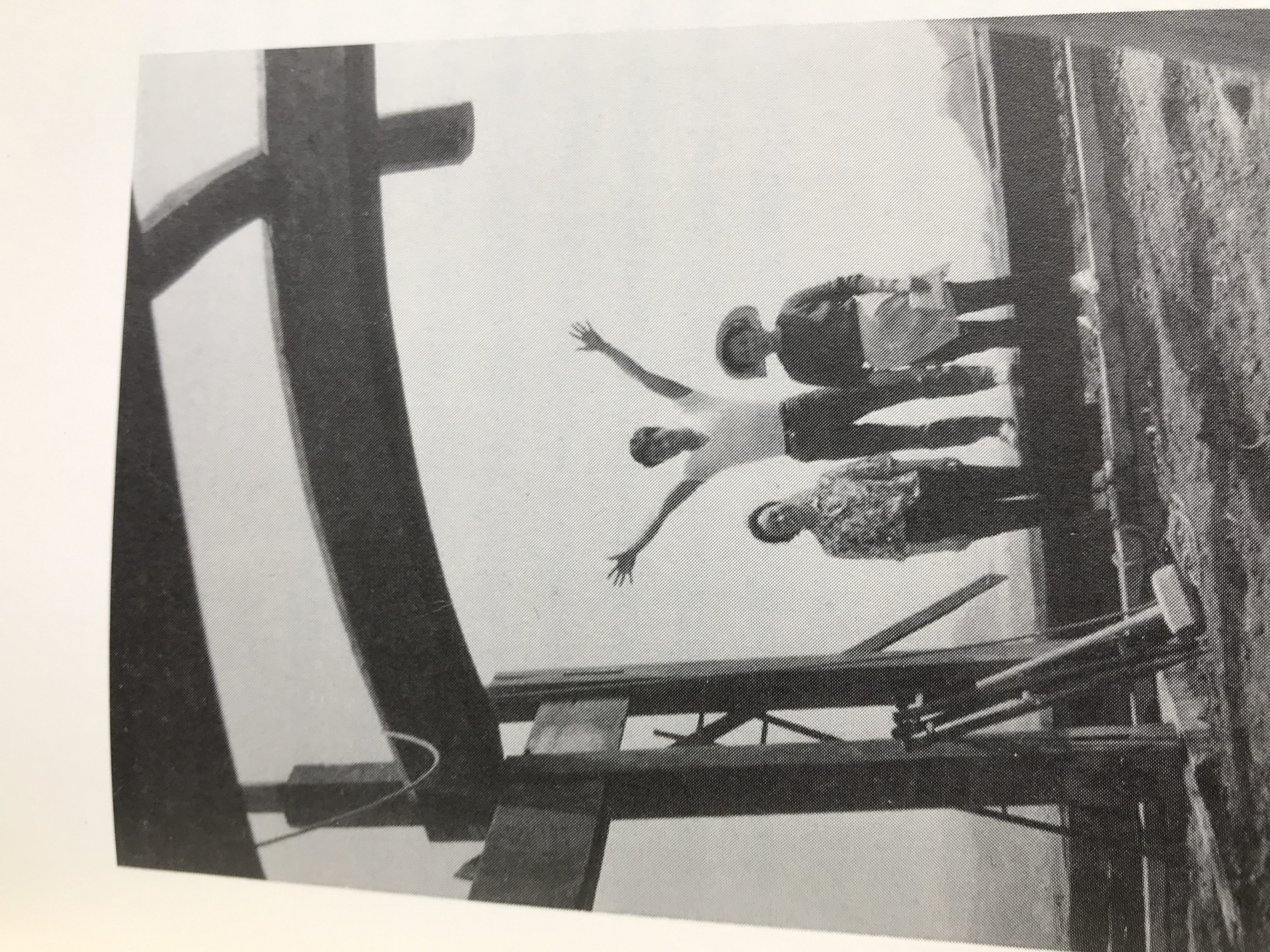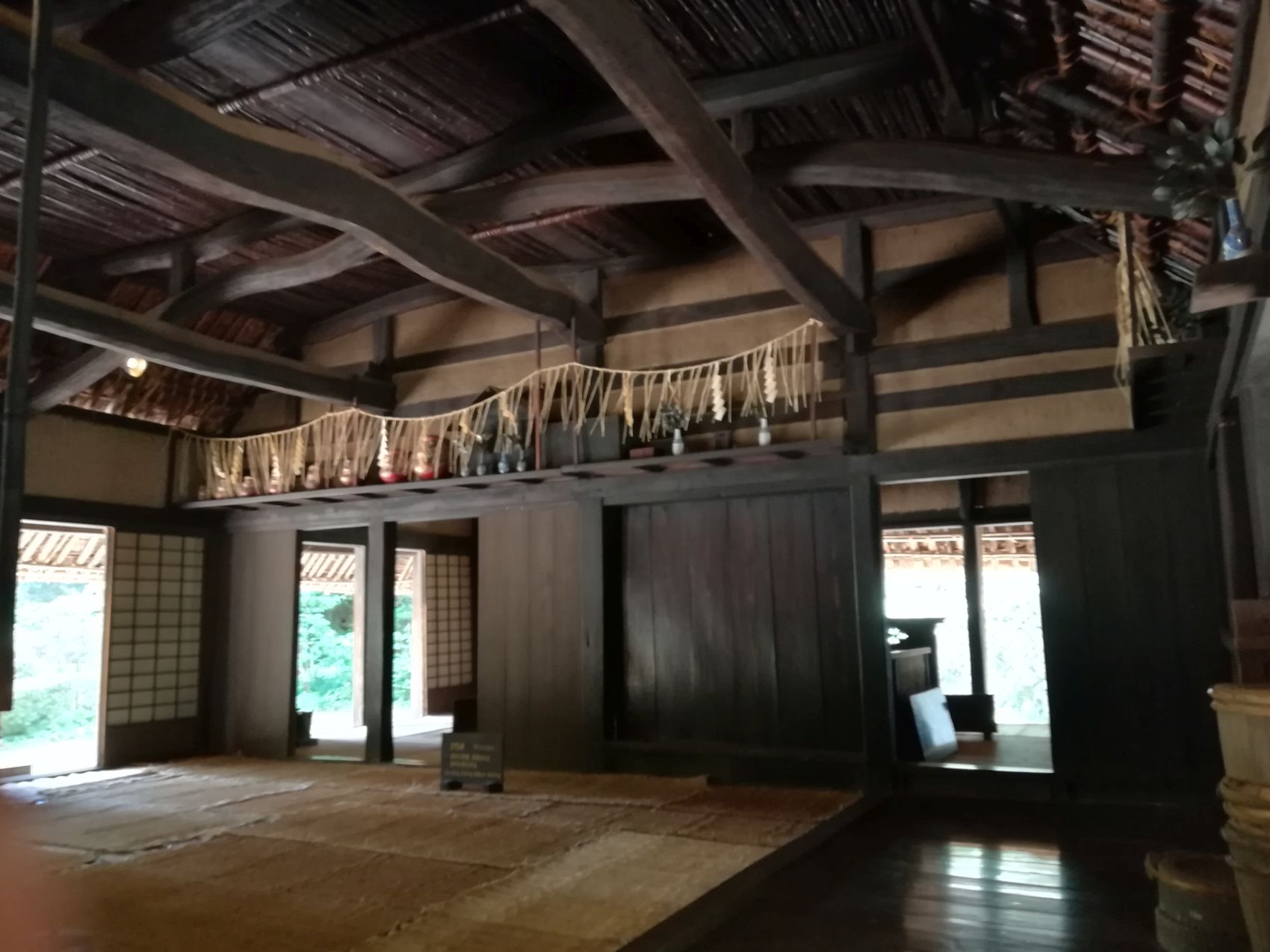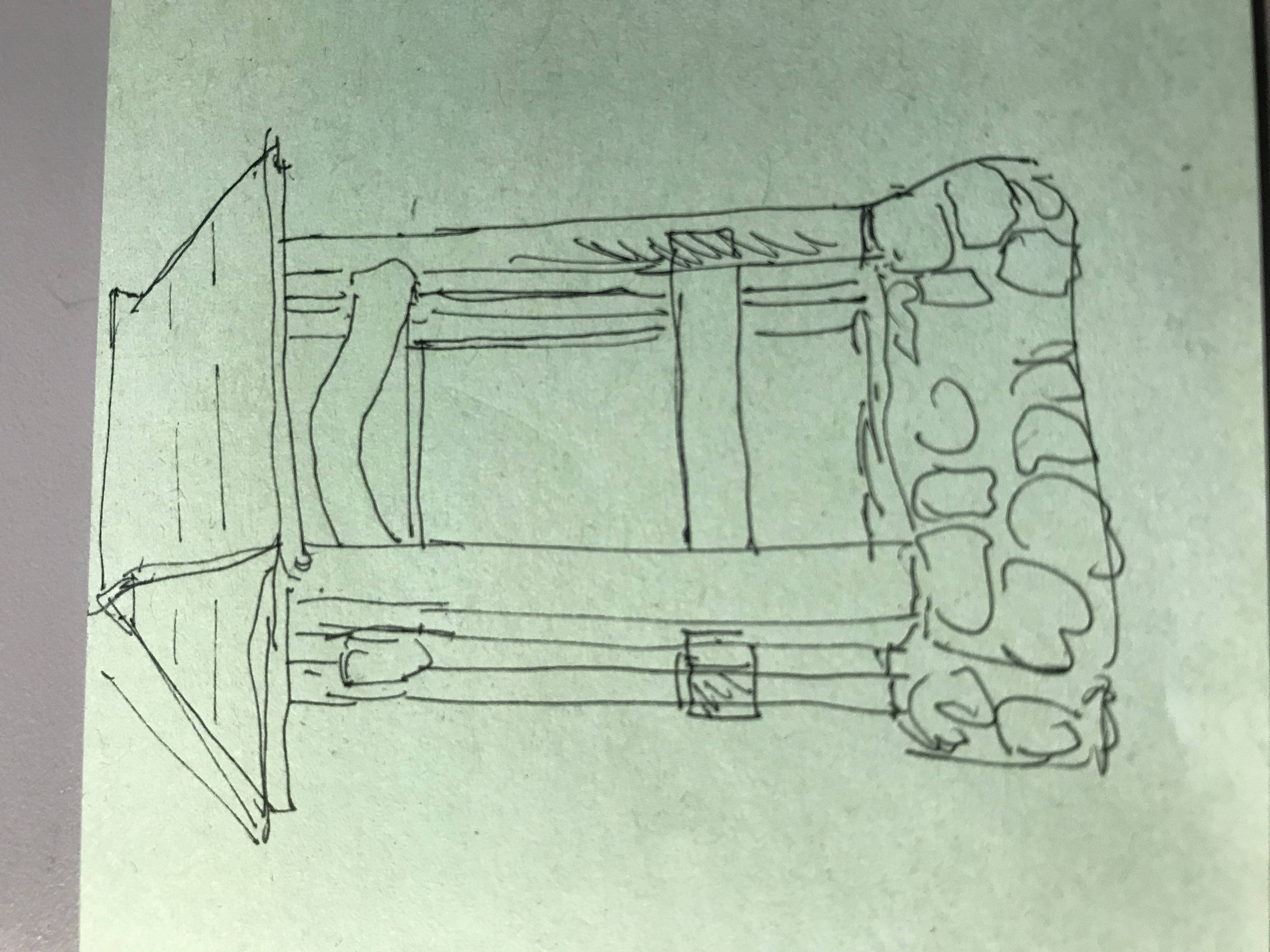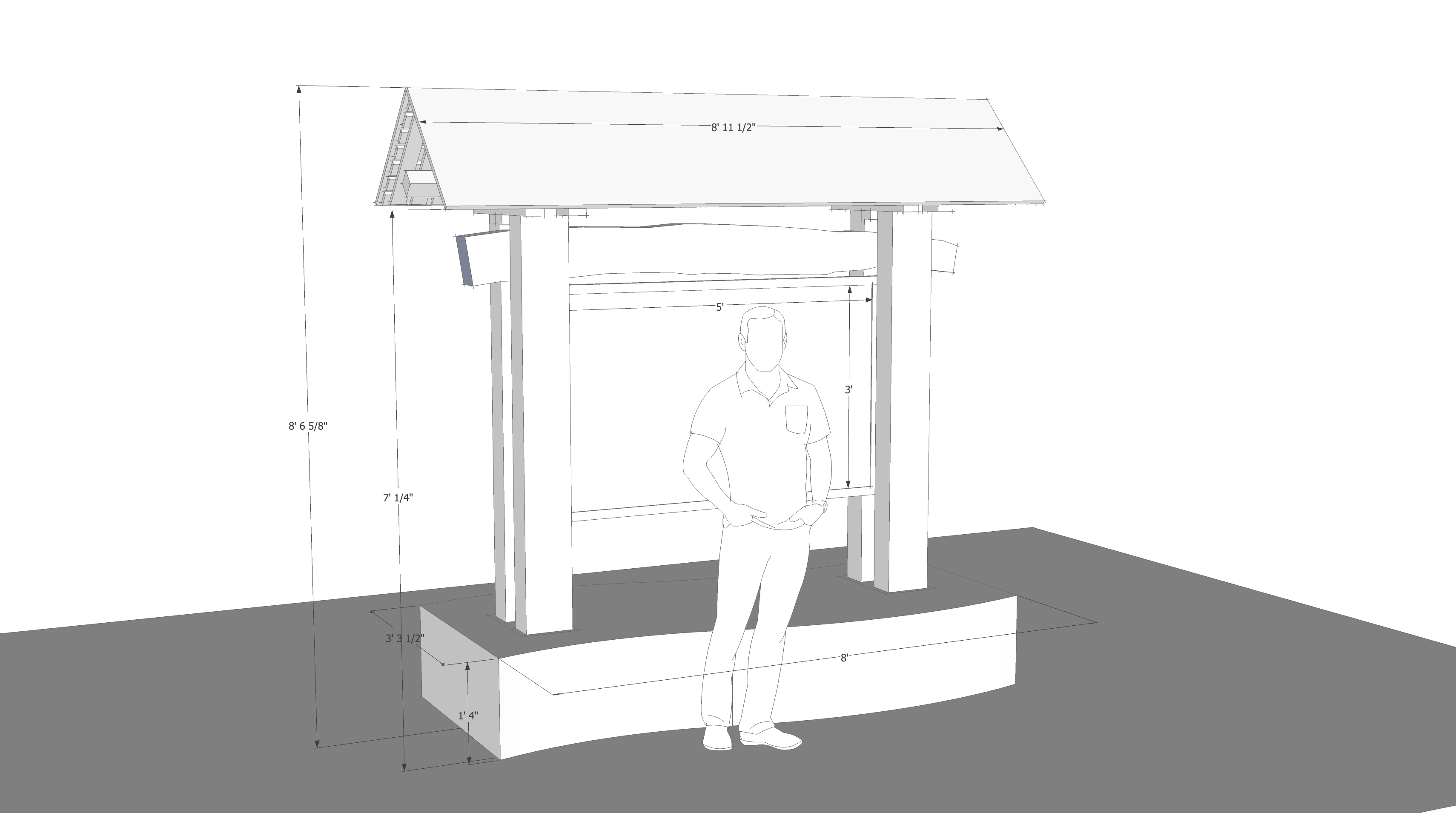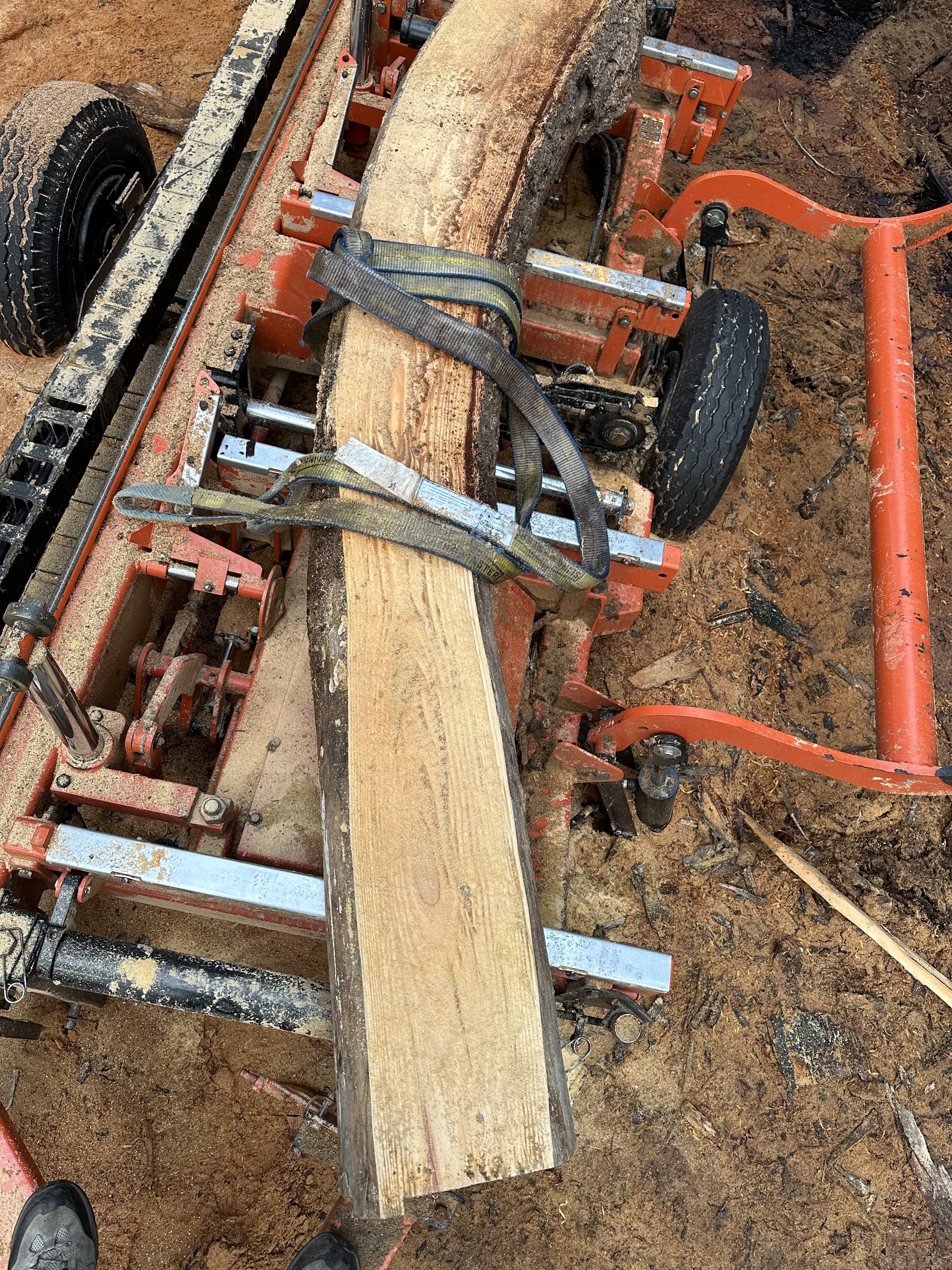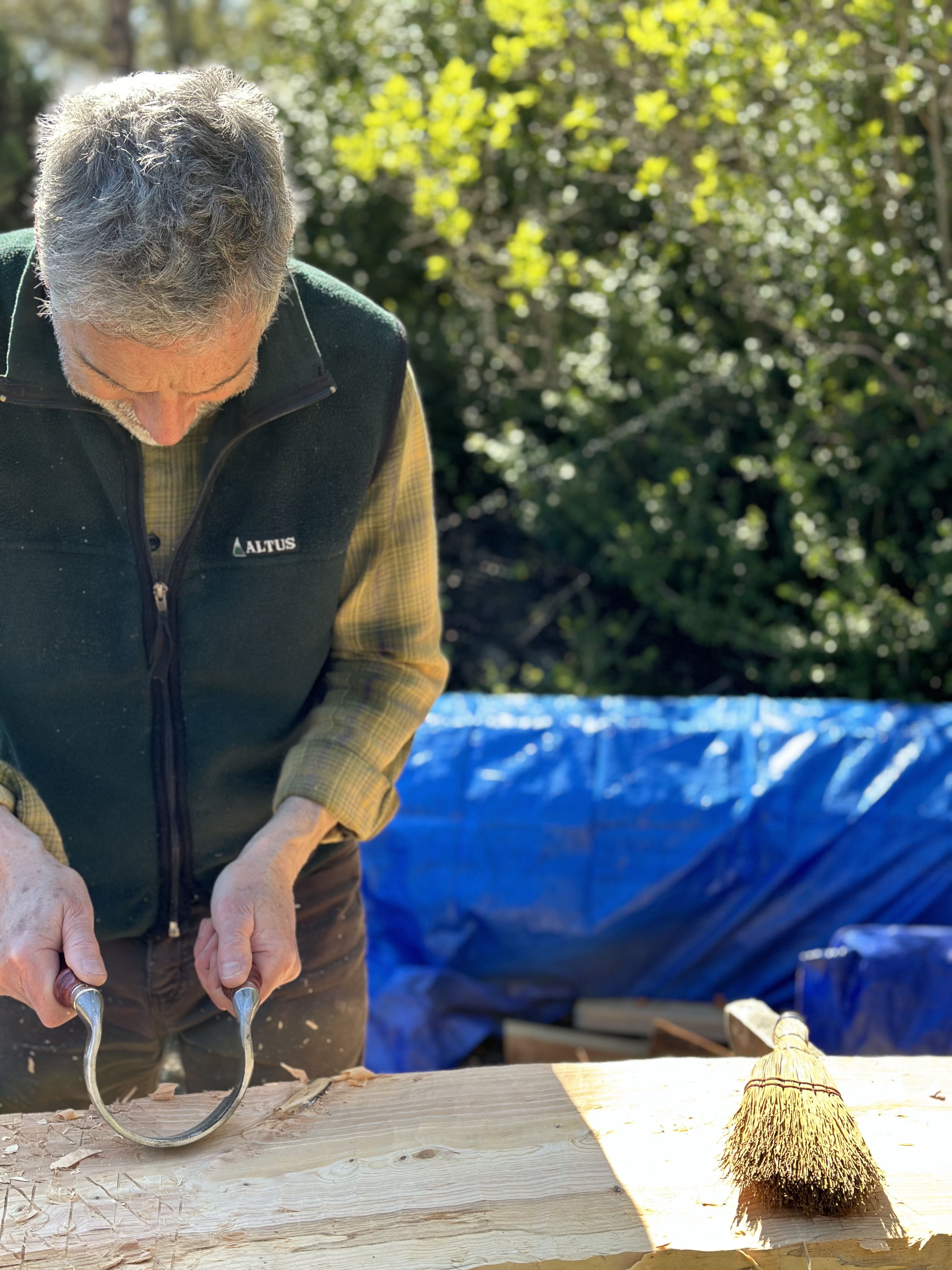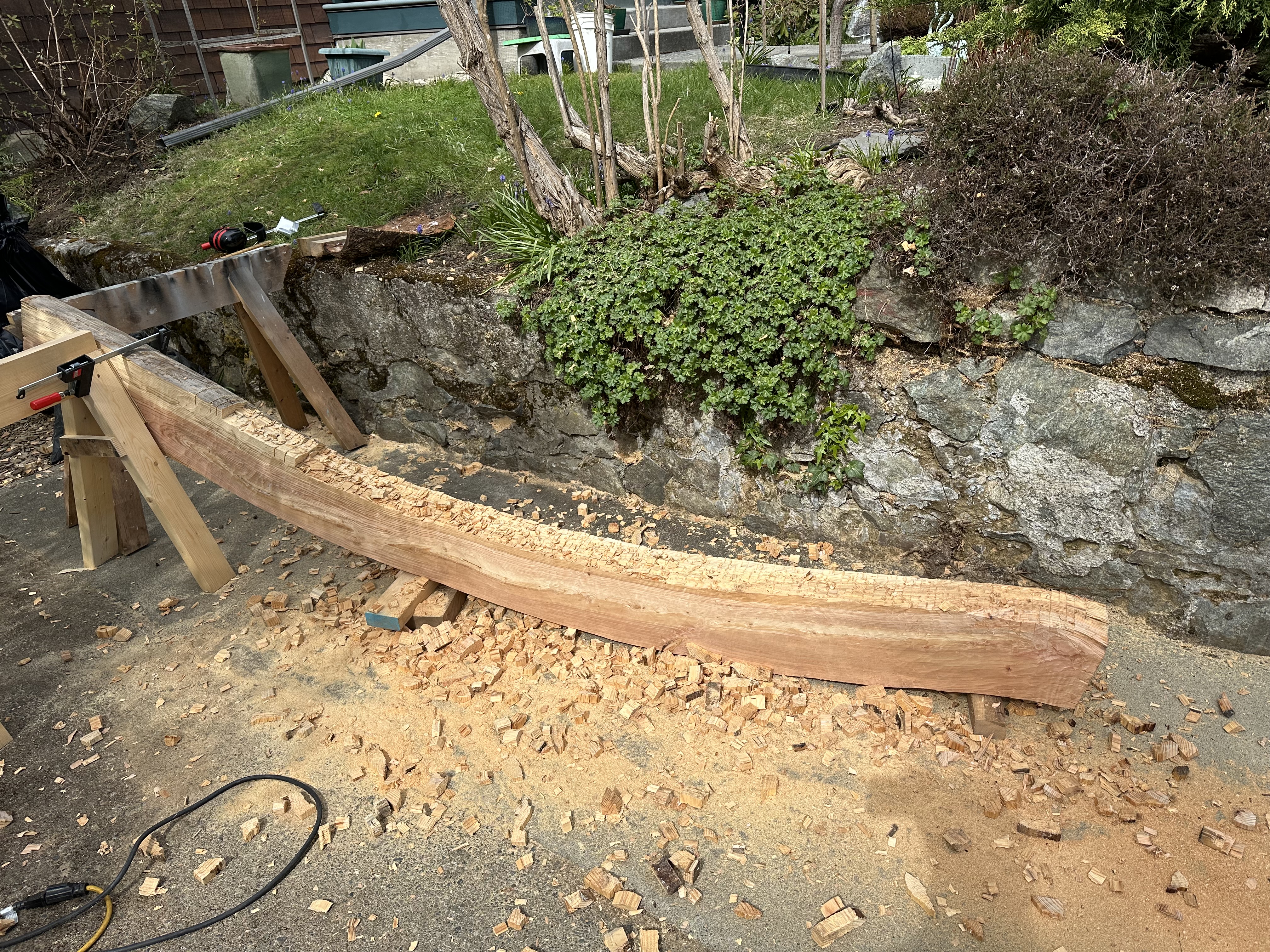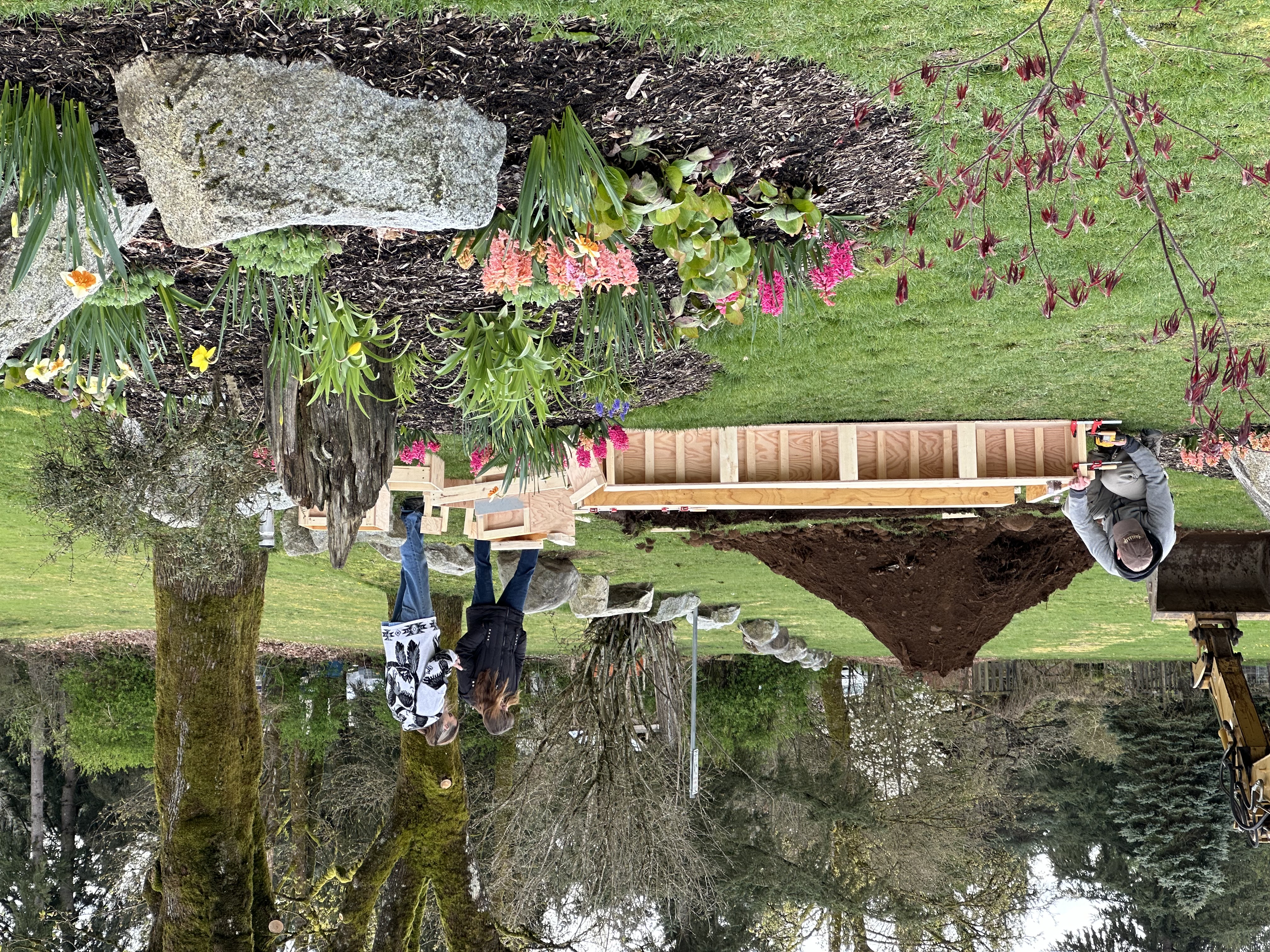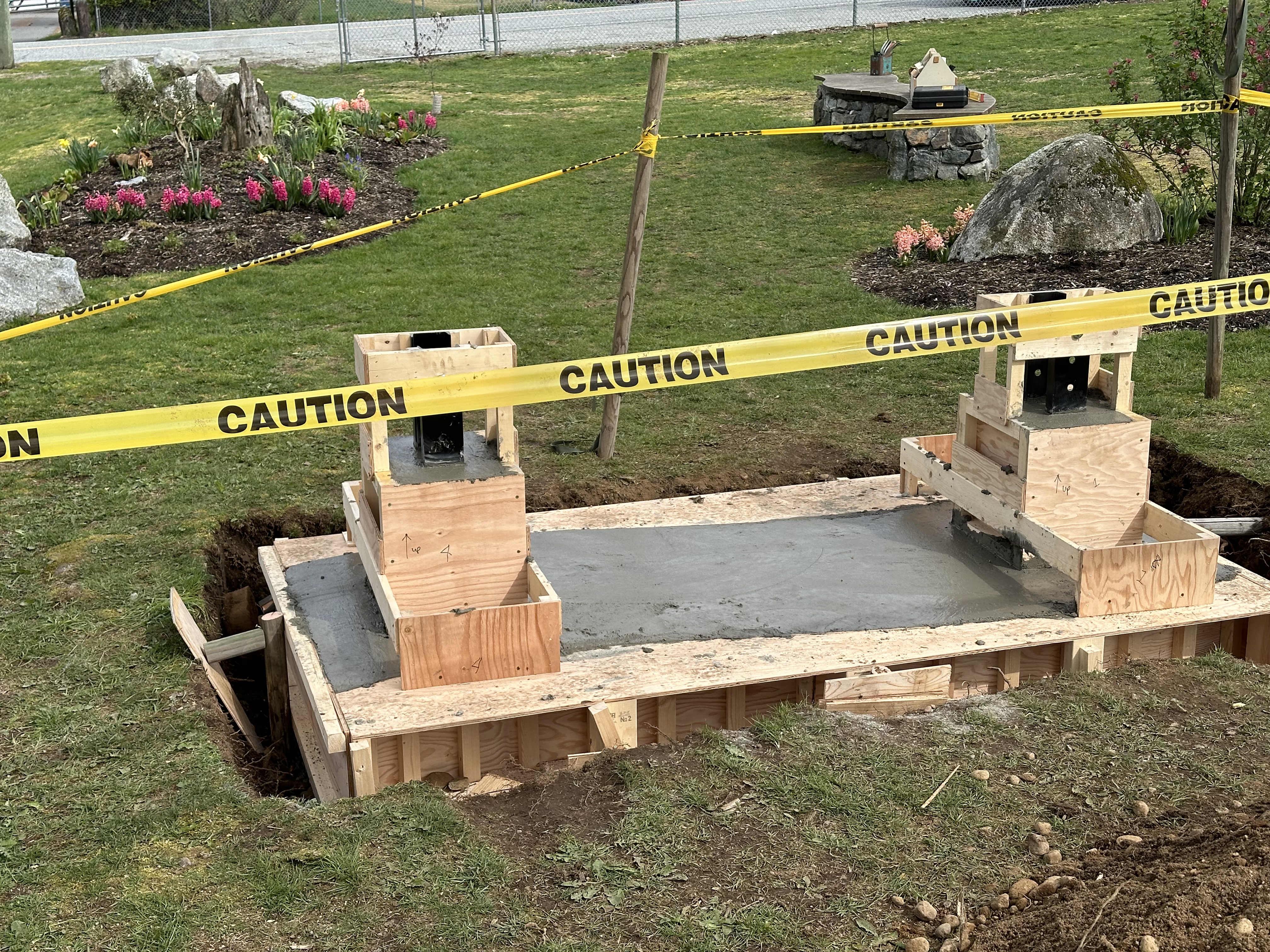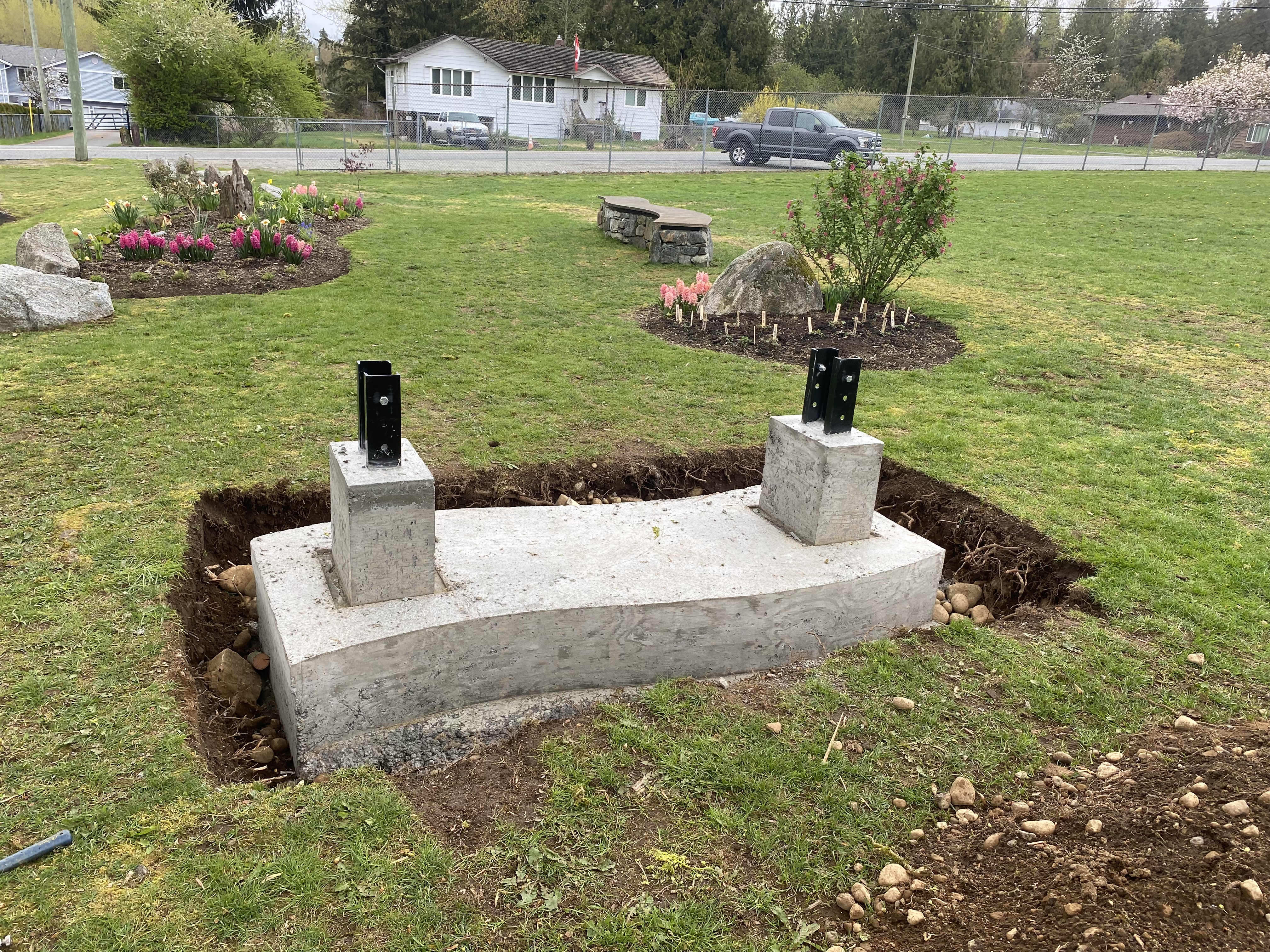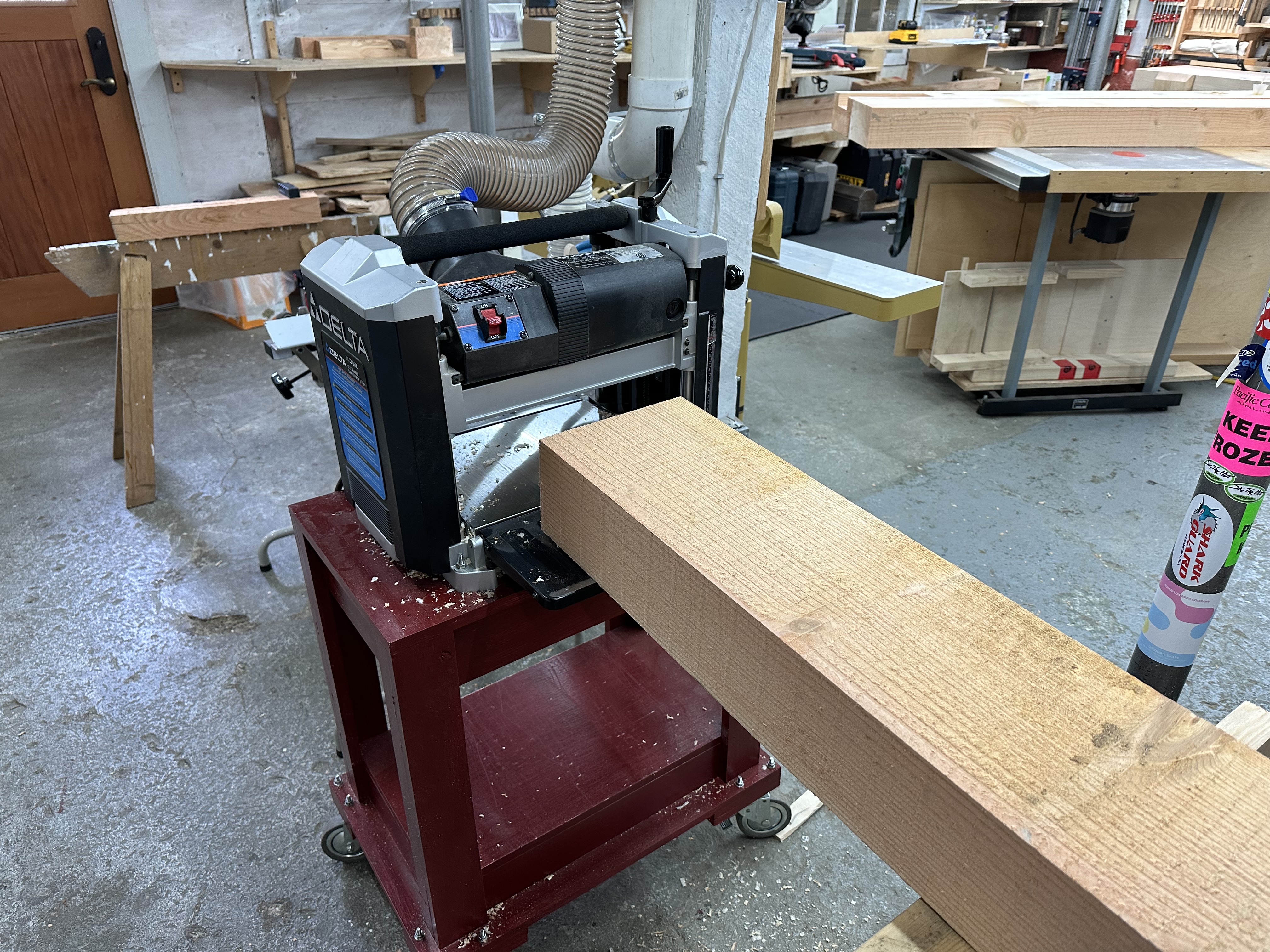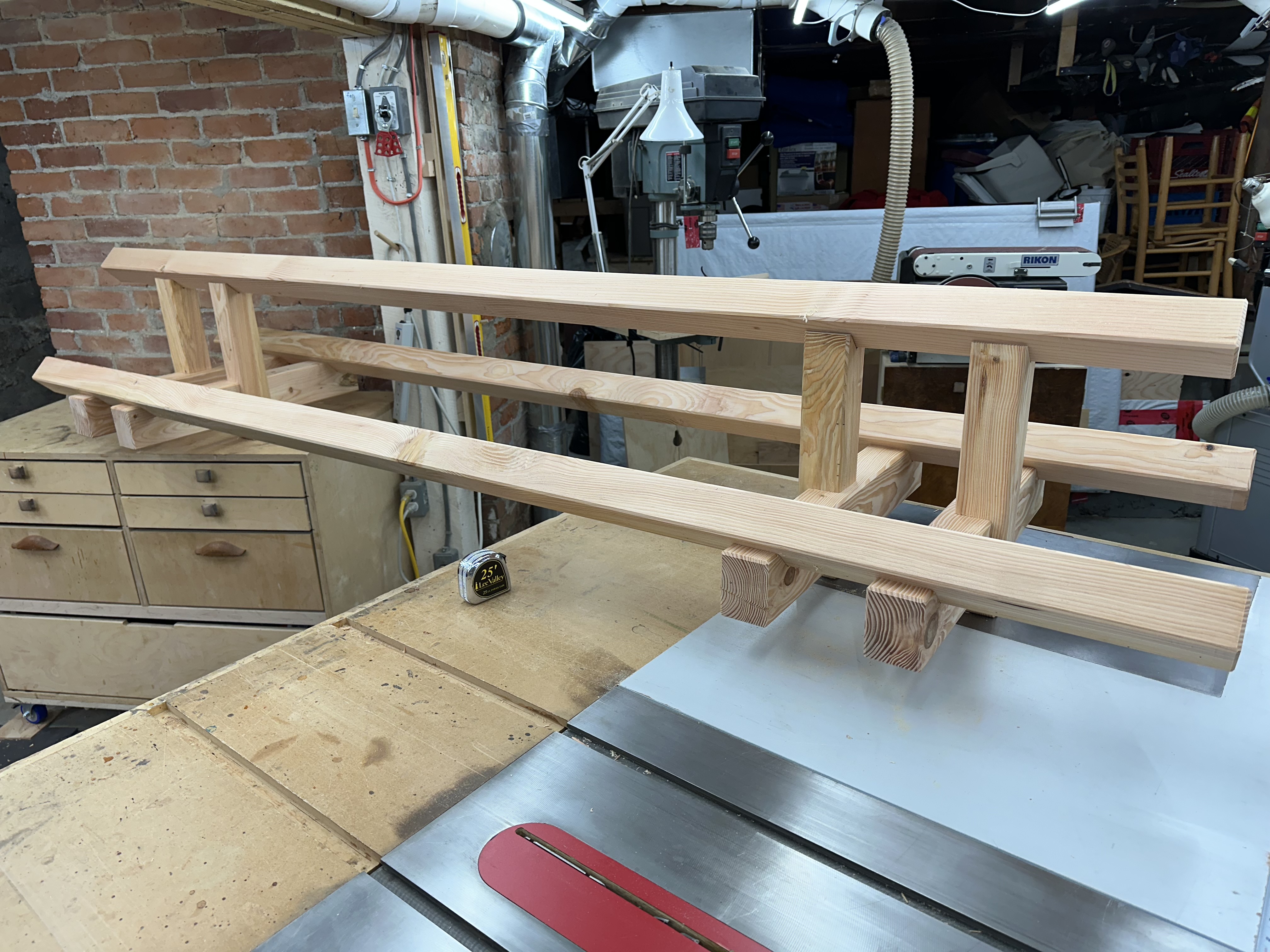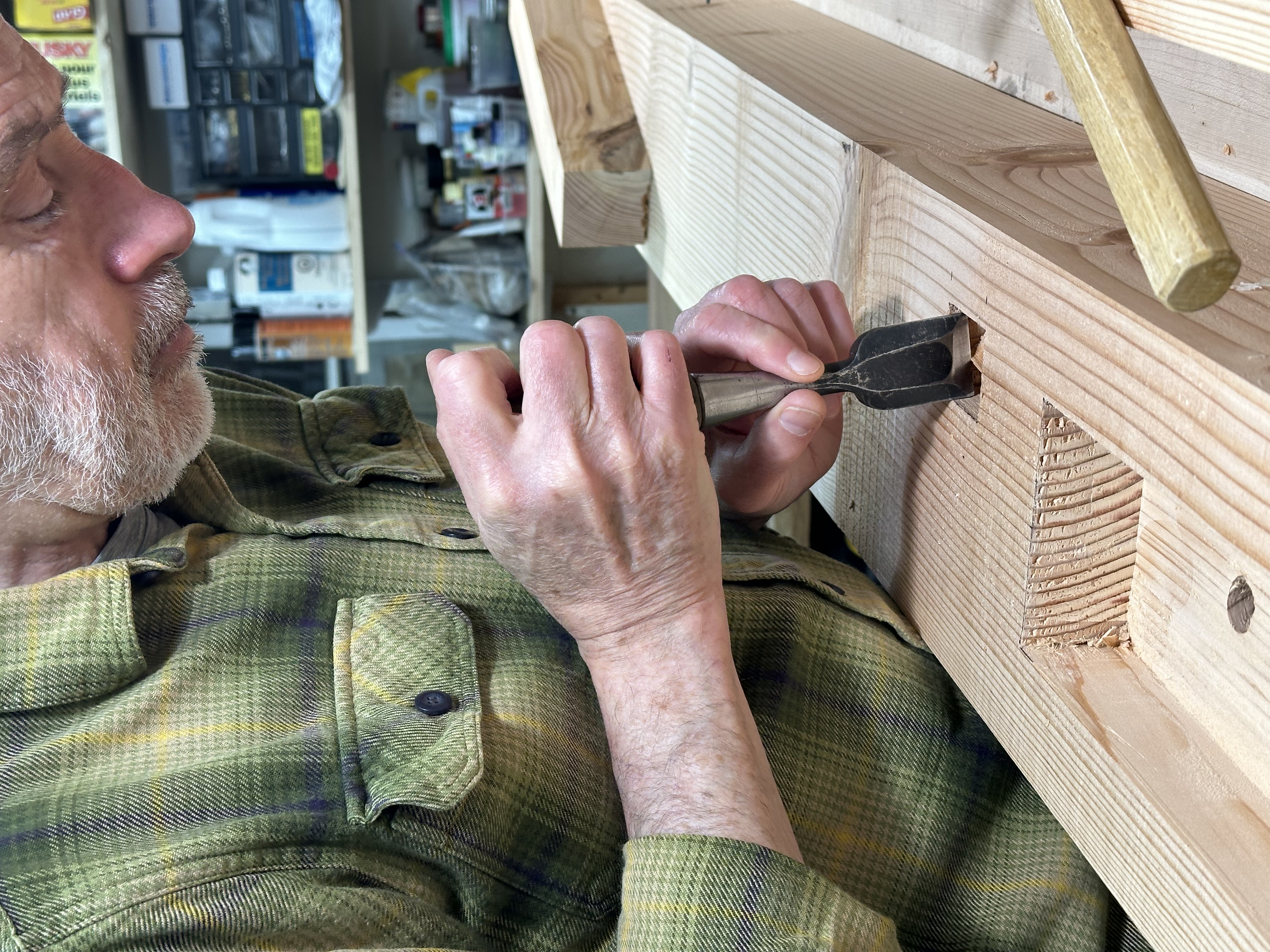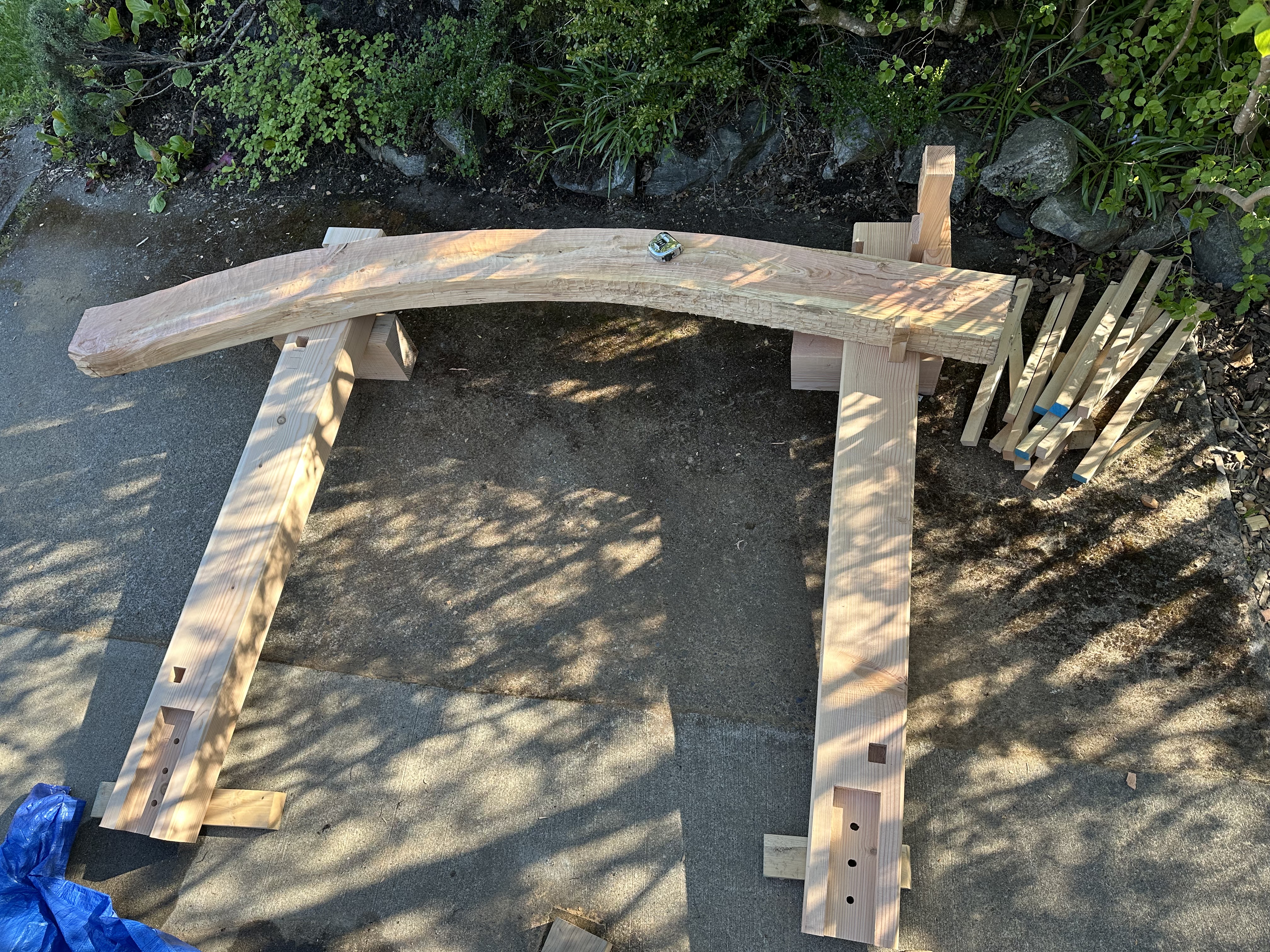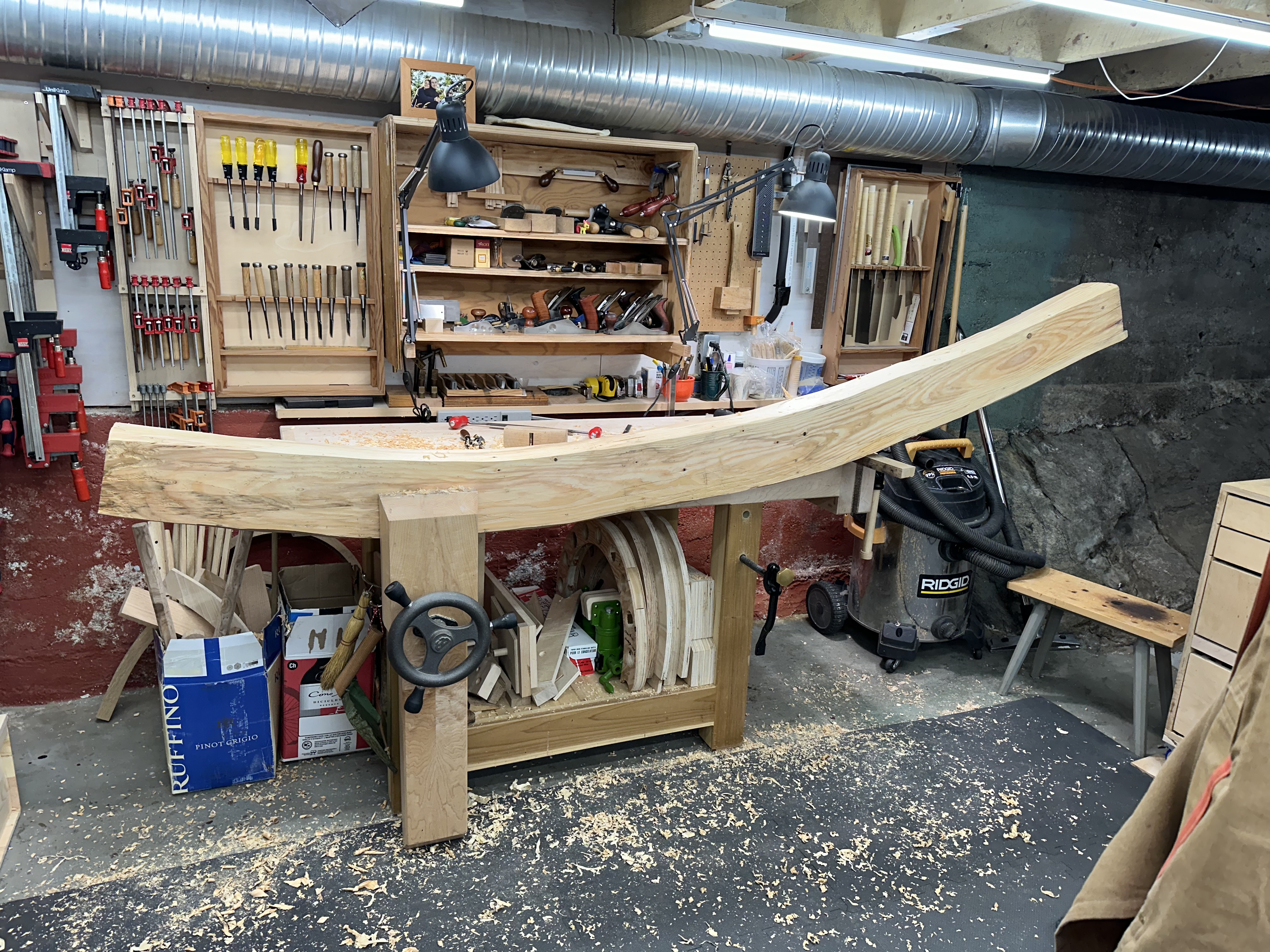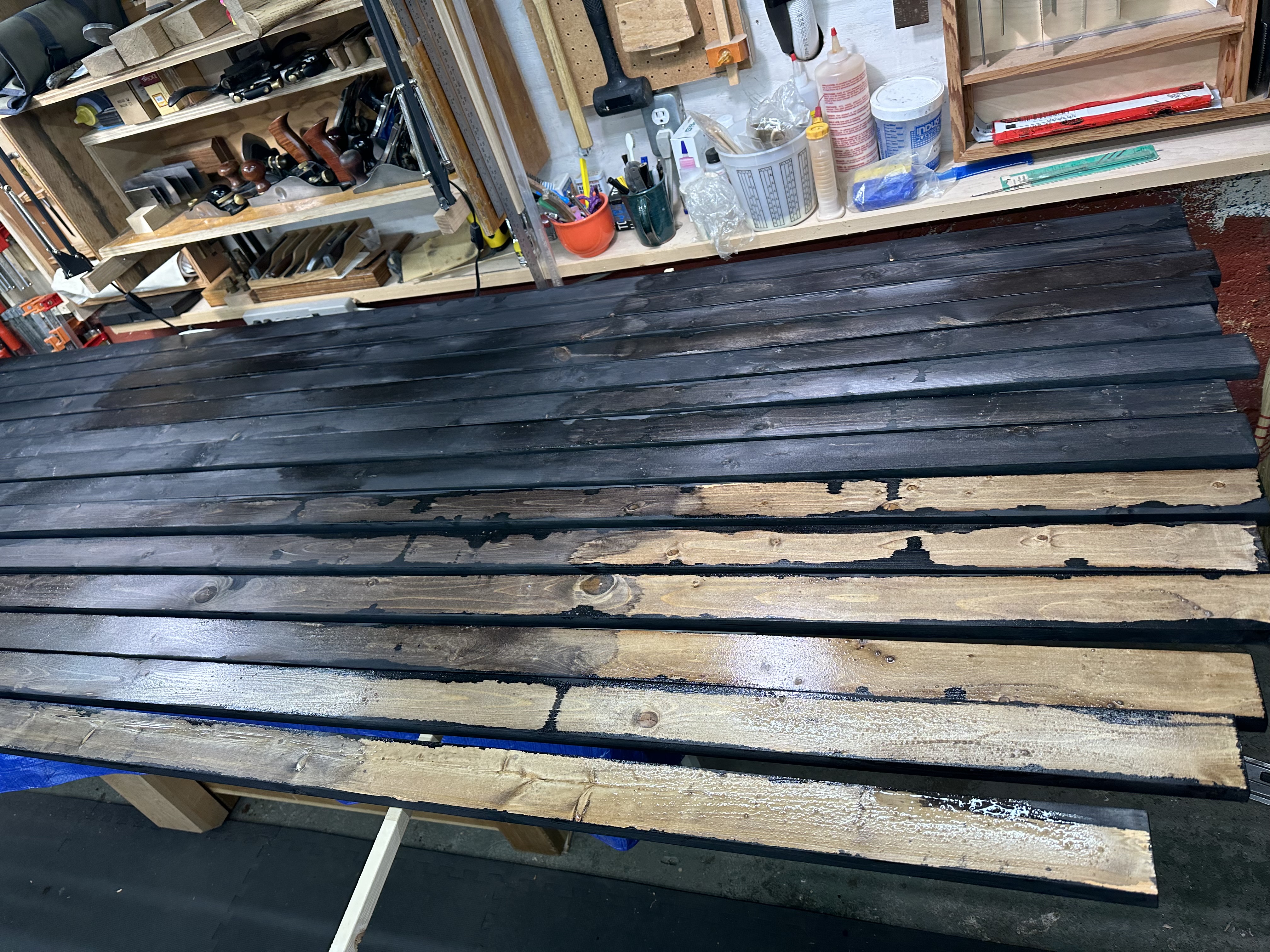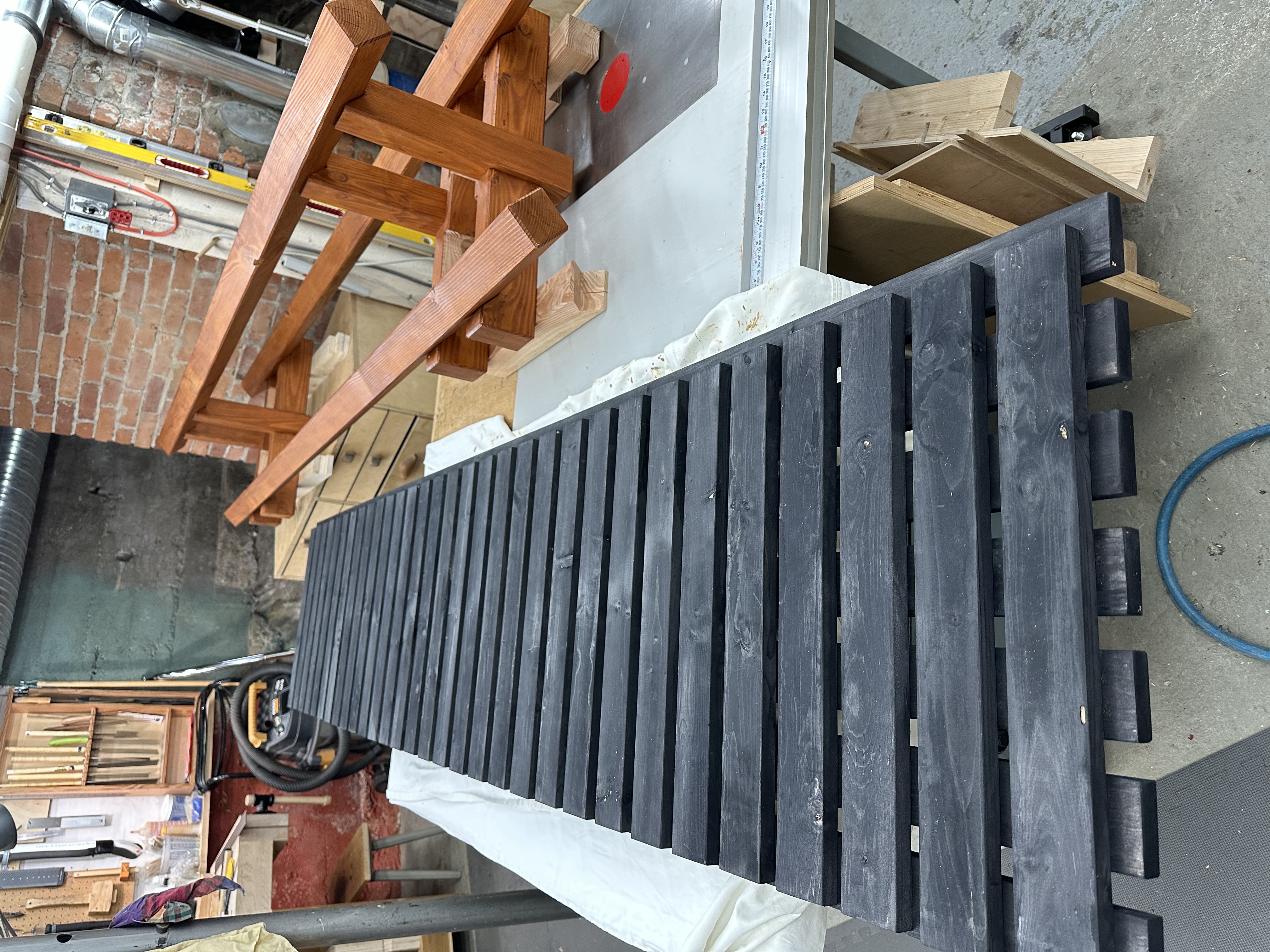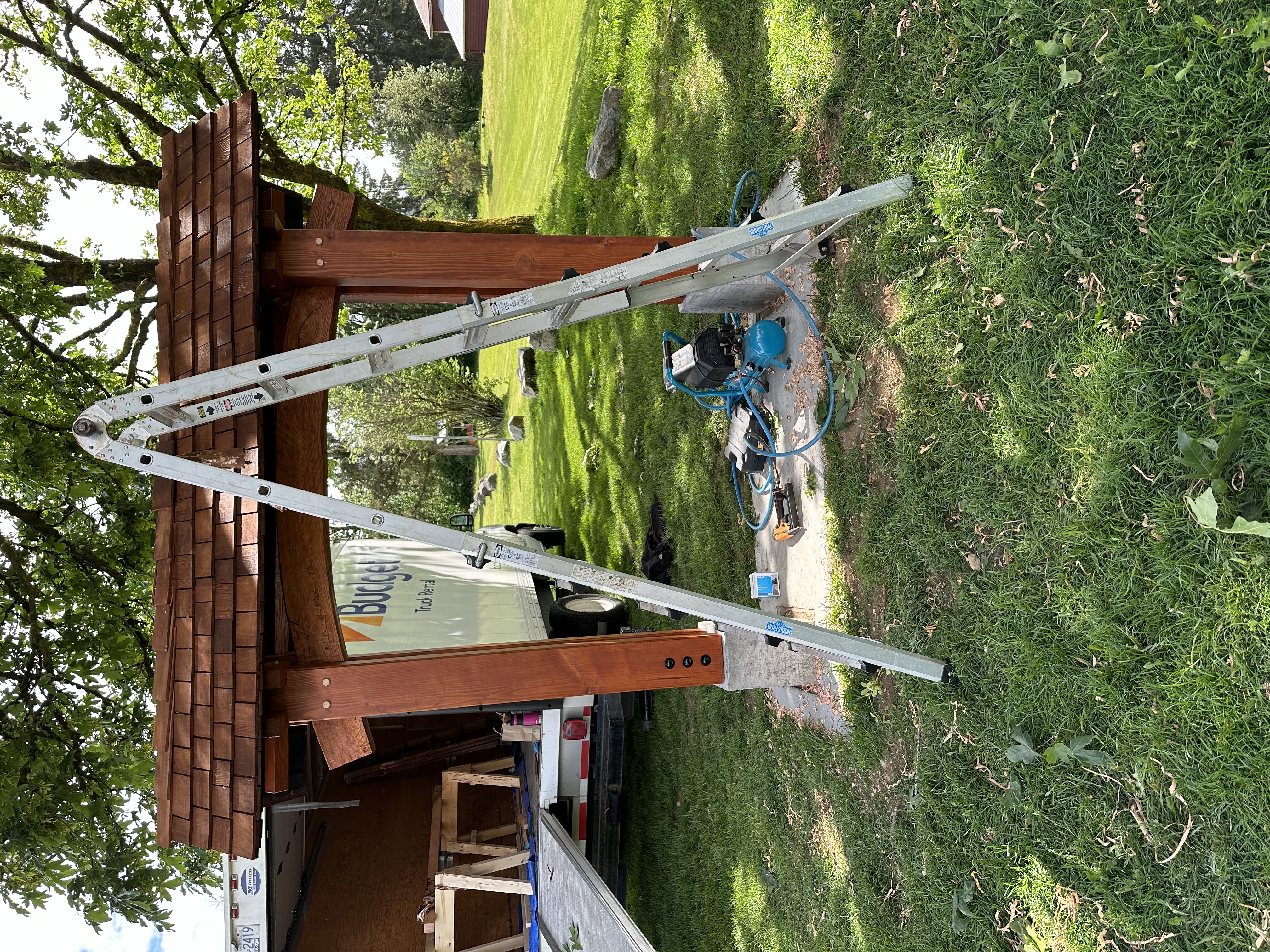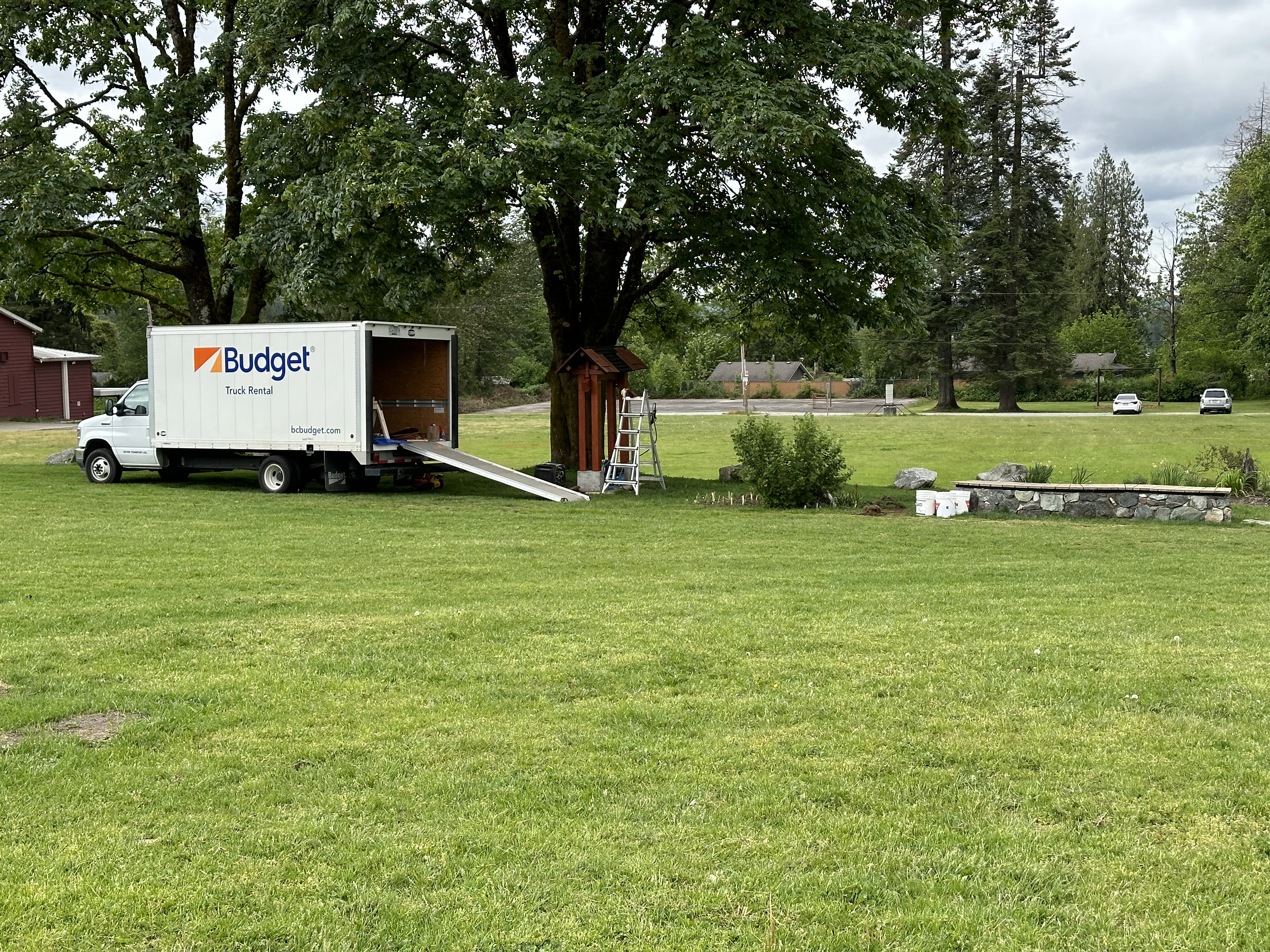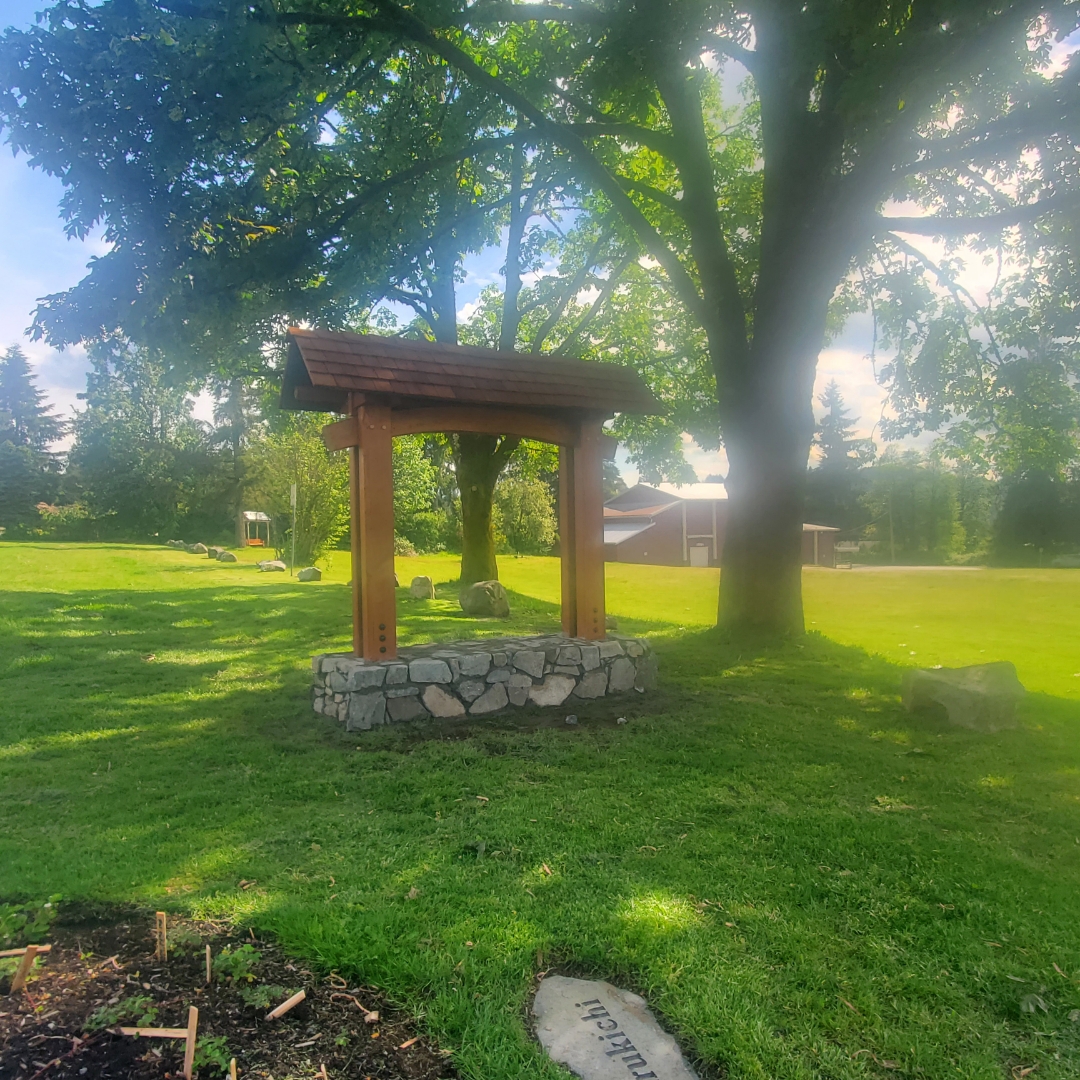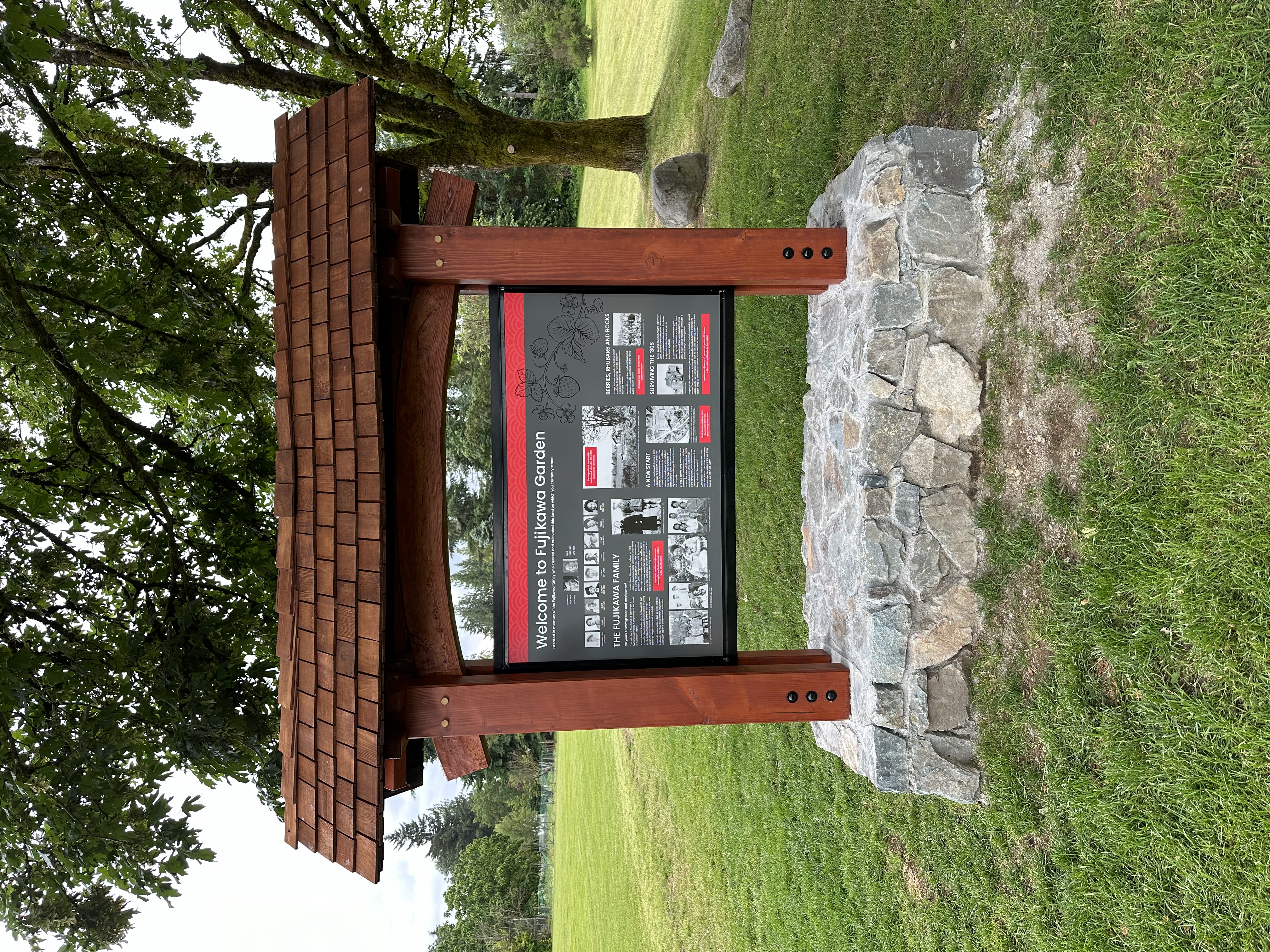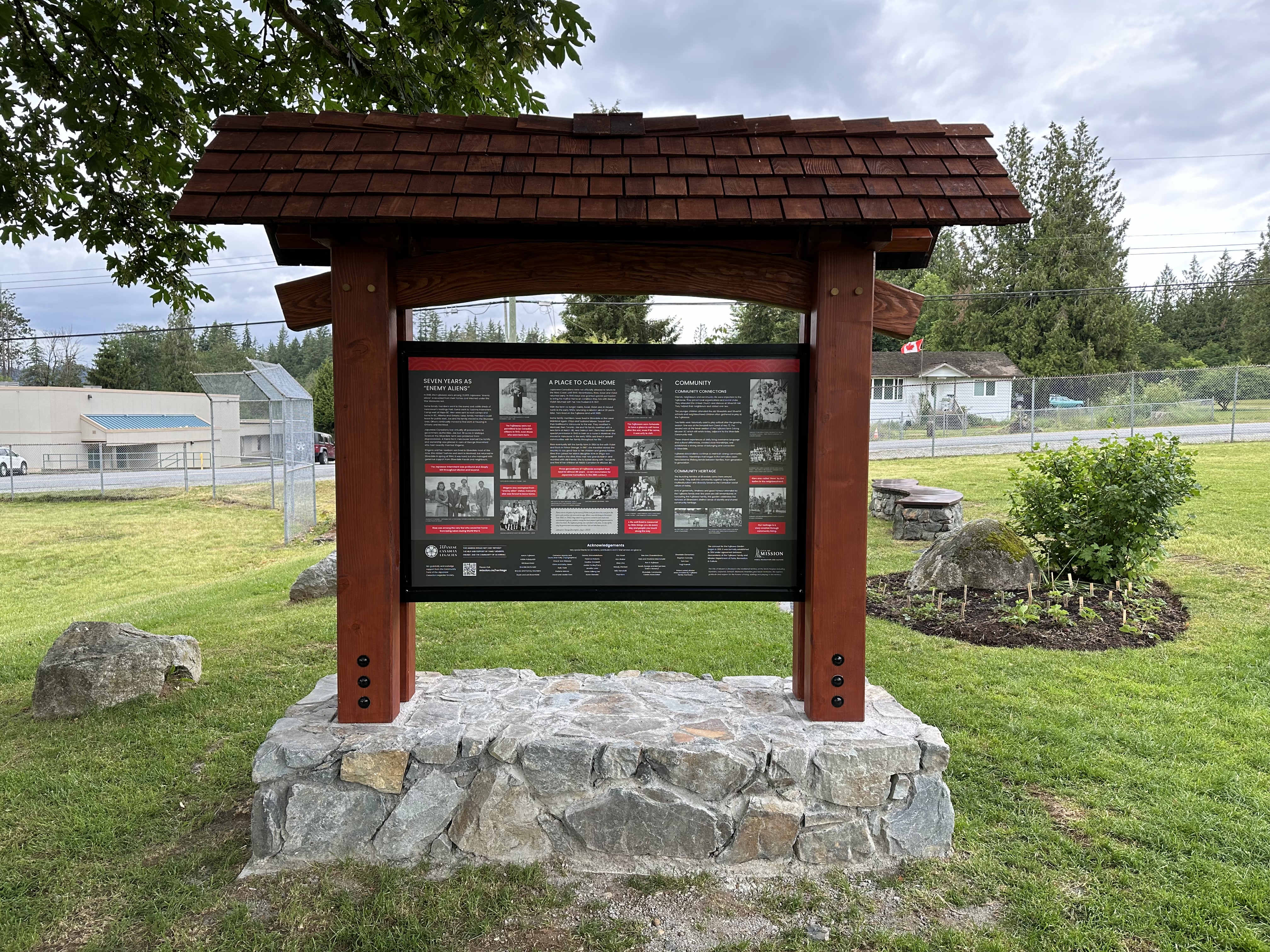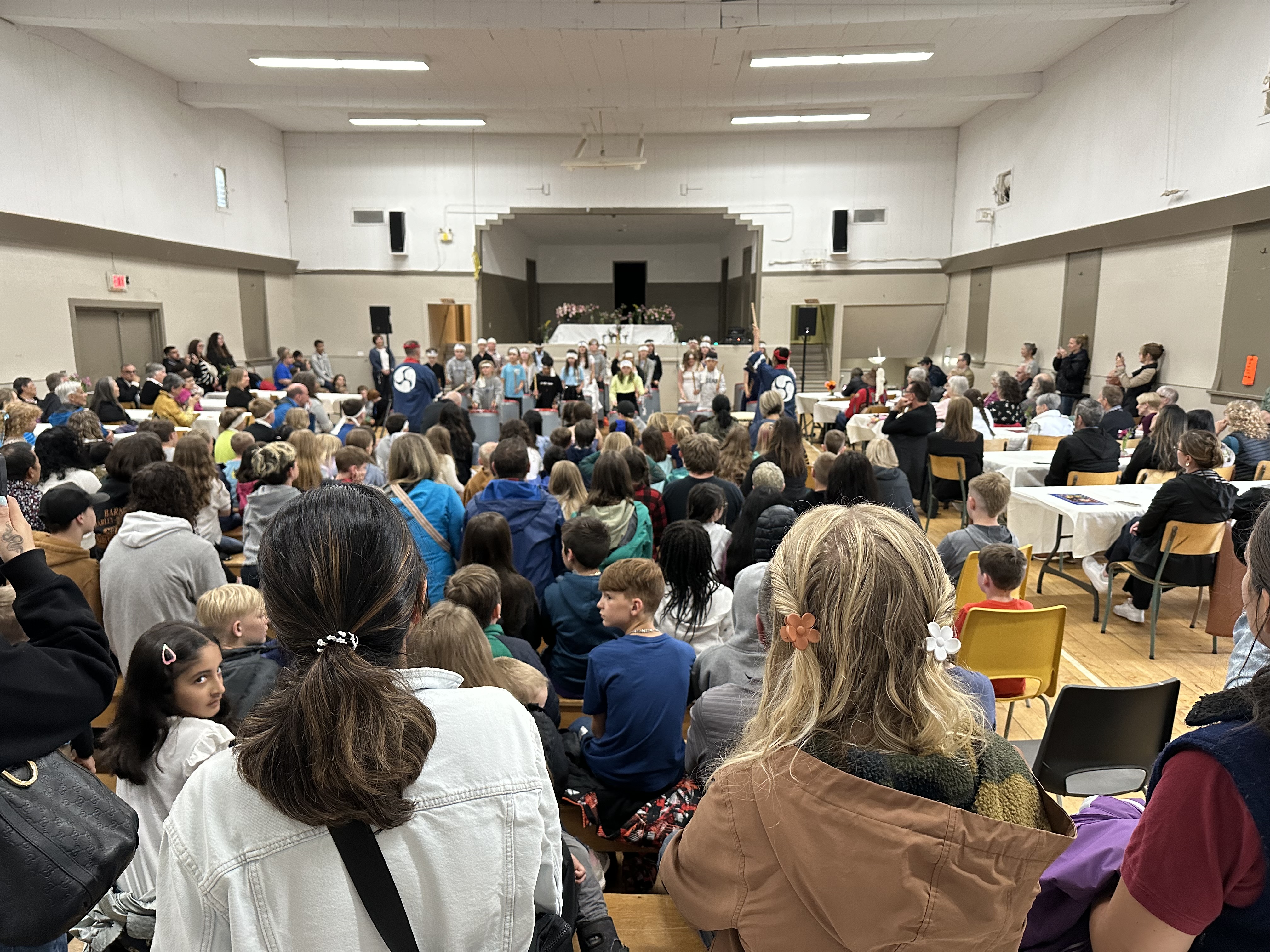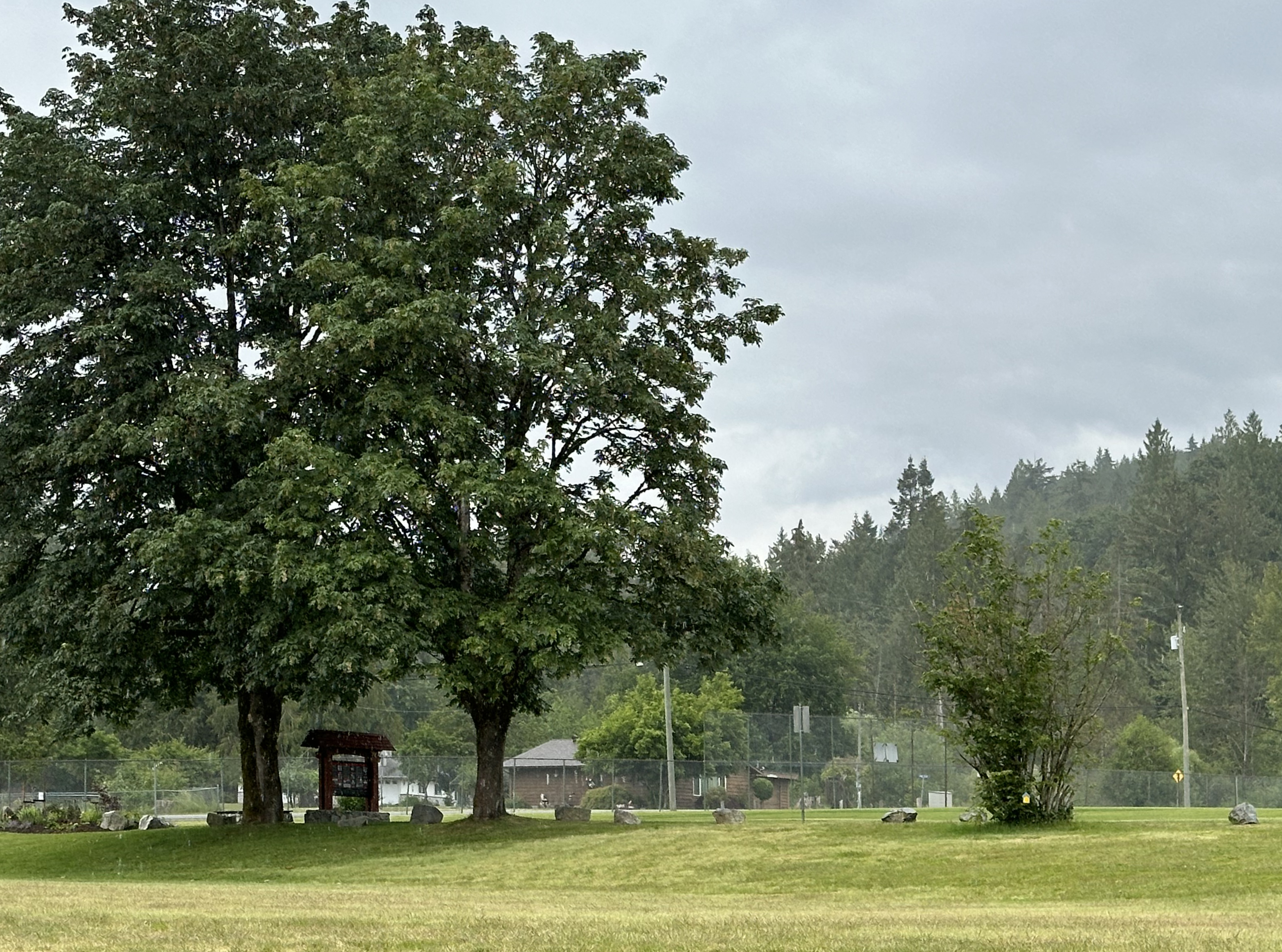The Fujikawa Garden is located in Silverdale, a rural community near Mission BC. The Garden sits in what is now municipal park but through much of the last century that land was a farm owned by the Fujikawa family. The Fujikawa Garden commemorates the family and celebrates their connections to that place and the community.
The garden started out simply as tree to be planted in memory of Kim’s mum, Doris, who died in 2011 and a red currant bush for her Aunt Vi who died in 2012. Doris and Vi were the last of the Fujikawa Nissei. The idea of planting a tree and a bush evolved to became a small garden with a bench and an interpretive sign that would tell the family story. The project took much longer than anyone expected. Work with city hall is never speedy, and there were other interruptions related to work obligations, covid, heat domes, drought, etc. Along the way the project grew connections with neighbours, extended family, the elementary school across the street, local guerrilla gardeners and parts of the broader Japanese Canadian community.
A few years ago we built a pretty cool garden bench on the site. A small garden has slowly grown there, trees have been planted and rocks have been engraved.
The garden sign was the last and most ambitious step in this project. A committee of family, community and city representatives reviewed and edited Kim’s initial work on the interpretive sign and the design of the sign structure went through multiple iterations. In early 2024 Kim secured a grant to partially support this work.
The Design
Park interpretive signs, or kiosks, come in all shapes and sizes and over the years we studied many examples. Kiosks range from basic and simple to downright ornate and gaudy. The fact that this sign was honouring a Japanese family created a huge temptation to show off a bunch of fancy Japanese joinery (never mind that that is way beyond my skill level). A couple of Kim’s uncles were carpenters and they were definitely not show-offs. We did not want the structure to distract from the story that the sign would tell. So we decided that our main design inspiration should be a Japanese farmhouse or Minka, not a Buddhist temple.
During our early research a couple of images stood out for us. The first from John Roderick’s Minka: My Farmhouse in Japan and the second a picture of the interior of a minka at the Nihon Minkaen Museum near Kawasaki City.
Both images show the use of curving timber as structural elements in the timber frame. Curved timbers are not unique to minka framing, but there’s an elegance in those images that we both liked. I kept a copy of an early sketch that I made, trying to use that idea of the curved timber. That sketch also shows a stone base for the sign, similar to the stone base of the bench.
From those early inspirations we settled into a design that generally survived multiple reviews and adjustments. We had to deal with conflicting goals regarding the overall size of the structure. On one hand there was a push to make sure the sign was not too large or out of scale with the rest of the park and garden. On the other hand, we wanted the sign to tell a complete story about the Fujikawa family. Ultimately we were able to come up with dimensions that everyone could support. Somewhere in the process I suggested that to free up some space I could remove the curved timber from the design. I was also thinking that the curved timber might turn out to be a lot of extra work. Unfortunately everyone else thought that the curved timber was just too good an idea, and it had to be kept. That made me nervous.
About That Curved Timber
Curved timber is not all that useful for most woodworking applications. Sawyers tend to leave the curved stuff behind because you can’t get straight, stable wood from it, and that’s what most woodworkers want. One mid-winter Saturday morning I was helping out with the Vancouver Island Woodworkers’ Guild wood rescue program. We had just received a couple of beautiful (straight!) arbutus logs, and I was helping to move and stack the sawn lumber as it came off the bandsaw mill. I struck up a conversation with one of my co-workers, describing the challenges of finding curved timber. Co-worker then points to a curved log in the back corner of the yard, and says “you mean something like that?” And there it was. I worked a deal with the sawyer, Mark, to purchase that log, and the rest of the straight timber that I would need for the garden sign.
Mark milled two sides of the curved log. The log and the rest of the timber was delivered to our driveway a week later. I realized that the log was way too big and would need some significant work to get it to the right size. There was no way the log would fit in my shop, and none of my machinery was anywhere near big enough to handle it anyway. So I used a skill saw, and hand tools to gradually get the log into the right shape.
The Foundation
Just like the bench, the foundation was going to have some curves. I wanted to avoid building something that complicated on-site so I built the forms in the shop. We packed up the forms and headed to Silverdale in early April. The garden was blooming when we arrived, and folks from City Parks and from the community were there to help us. Best part was when we realized that we had forgotten about gravel for the bottom of the excavation and Yogi the backhoe operator (and neighbour, and concrete veteran) heads out with his machine and subtly “borrows” a load from the side of a nearby road. Good local problem solving.
We excavated the hole and assembled the forms on the first day. And we installed the rebar and poured concrete the following day. Kim and I were on the 5pm ferry home, thinking about the work ahead of us. The following week, neighbour Rob wrote to let us know that he couldn’t wait for the City to strip the forms, so he just went ahead and did it himself.
Rob even sent photos to prove it. The best part was that the photos confirmed that kids from the school across the street had been to the garden the day before, and had planted strawberries!
Milling
That beautiful fir timber had been sitting in the driveway for a couple of months. On one hand I was anxious to get started with that material, but I was also a bit intimidated. I could barely lift the bigger timbers, and I was not sure that I would be able to mill it in my shop. None of my machinery was build to handle stuff that size. But I eventually screwed up my courage and waded in. Surprisingly, my little 12 1/2” portable thickness planer from the mid 1990s handled those timbers without too much difficulty.
It took me about a week to shape the main posts and the roof beams. The best part of that work was cutting mortises with a chisel that Kim’s uncle Koazi gave me. I’m pretty sure that he was out there somewhere, offering me encouragement and kind advice.
And with those parts all cut to size, I went back to the curved timber and coaxed it into the right shape. I must have removed about half the total volume of that piece, getting it to fit. Which was good news, I could now lift that timber into the the shop and hoist it onto the bench for final shaping.
The Sub-Roof
Plywood would have been the most practical sub-roof, but it would not have looked right. We thought instead that two layers of spruce strapping, arranged in a crossed pattern might work. Not exactly authentic, but more interesting than plywood. But even for a small roof that amounted to a lot of material, and of course we could not find the correct dimensions. So I wound up ripping 300 feet of 1” x 4” down to size. Tedious, but not difficult. Just even more material getting in the way in my small shop
We also decided that the spruce should be black. Over the years I’ve used a couple of methods to turn wood black, but given the circumstances (crappy spruce, outdoor location) I figured that iron acetate might be the best solution. I started by adding some steel wool to a jar of vinegar, and waiting for it to mostly dissolve. Iron acetate reacts with the tannins in wood to turn it black, but spruce does not have tannins of its own. So I painted the wood with a quebracho solution. Quebracho is full of tannins. Once the wood was dry, I painted on the vinegar and steel wool solution. the solution goes on clear but in a few minutes the wood turns black. Magic!
Once all the wood was dyed black, I assembled it into two panels that would form the sub-roof.
Installing the Wood and Stone
With all the preparation done, we loaded all the material and tools onto a cube van, and headed to Silverdale. Local heroes Rob and Yogi were there waiting and ready to help. Things started out well, and we managed to get the big timber pieces into place in a few hours. But the cedar shingle roof really slowed us down, each piece needed to be coated with the same surface treatment that we used on the timbers. That work took us a day and a half.
A few days later Tom the Rock Man filled in the stonework at the base of the sign. We weren’t there to watch that work, but Tom sent us pictures. I’m not sure if the haze in this photo is the sun breaking through after a day of rain, or just smudges on the lens of the camera. One way or another, it’s a great image.
Installing the Sign
While I had been working design and installation of the sign structure, Kim had been working on the sign itself. She had a committee comprising family members, community, and City staff. They had the help of a graphic artist. As is always the case with committee work there were some ups and downs, but after multiple rounds of edits they landed on a final design that was sent off to the printer.
The sign was installed in late June – it looked great!
The Celebration
The next day, June 27, was the official opening celebration for the Fujikawa Garden. The day was rainy so most of the celebration occurred in the famous Silverdale Hall, right next door. Silverdale Hall hosted a Fujikawa family reunion back in 2007. It’s a great old building. There were about 300 people in attendance: Fujikawa descendants, elders, neighbours, friends, school kids and local officials. Mayor and family friend Paul provided welcoming comments, and Kim brought the whole project into focus with her talk about how it all happened and why. This was followed by a taiko drumming performance by kids from the Silverdale School. Then it was time for strawberry ice cream and cupcakes! It was a wonderful day.
The celebration got some coverage from the local press. And the City of Mission now has a page describing the garden with links to background on the garden and it’s related stories.
